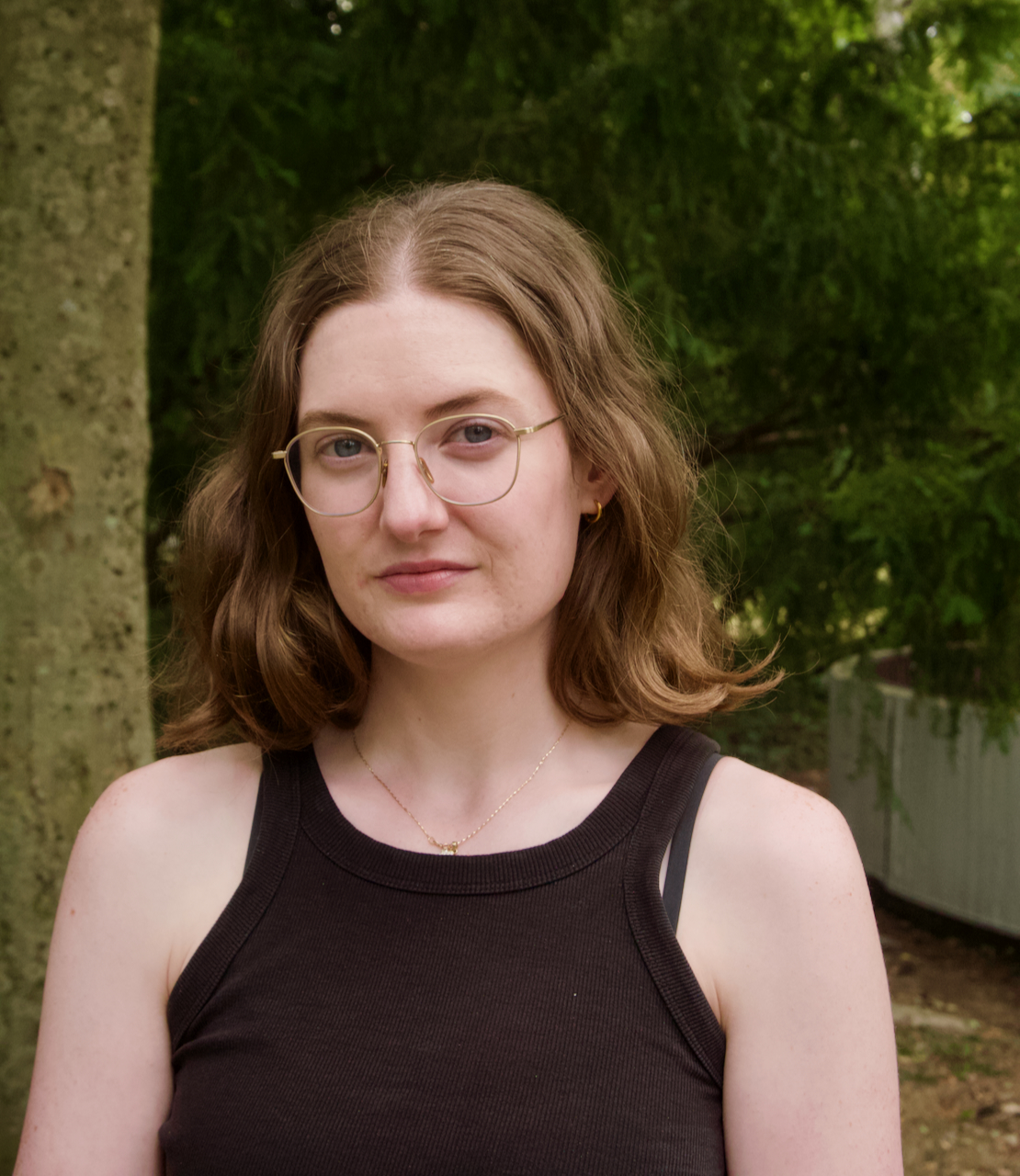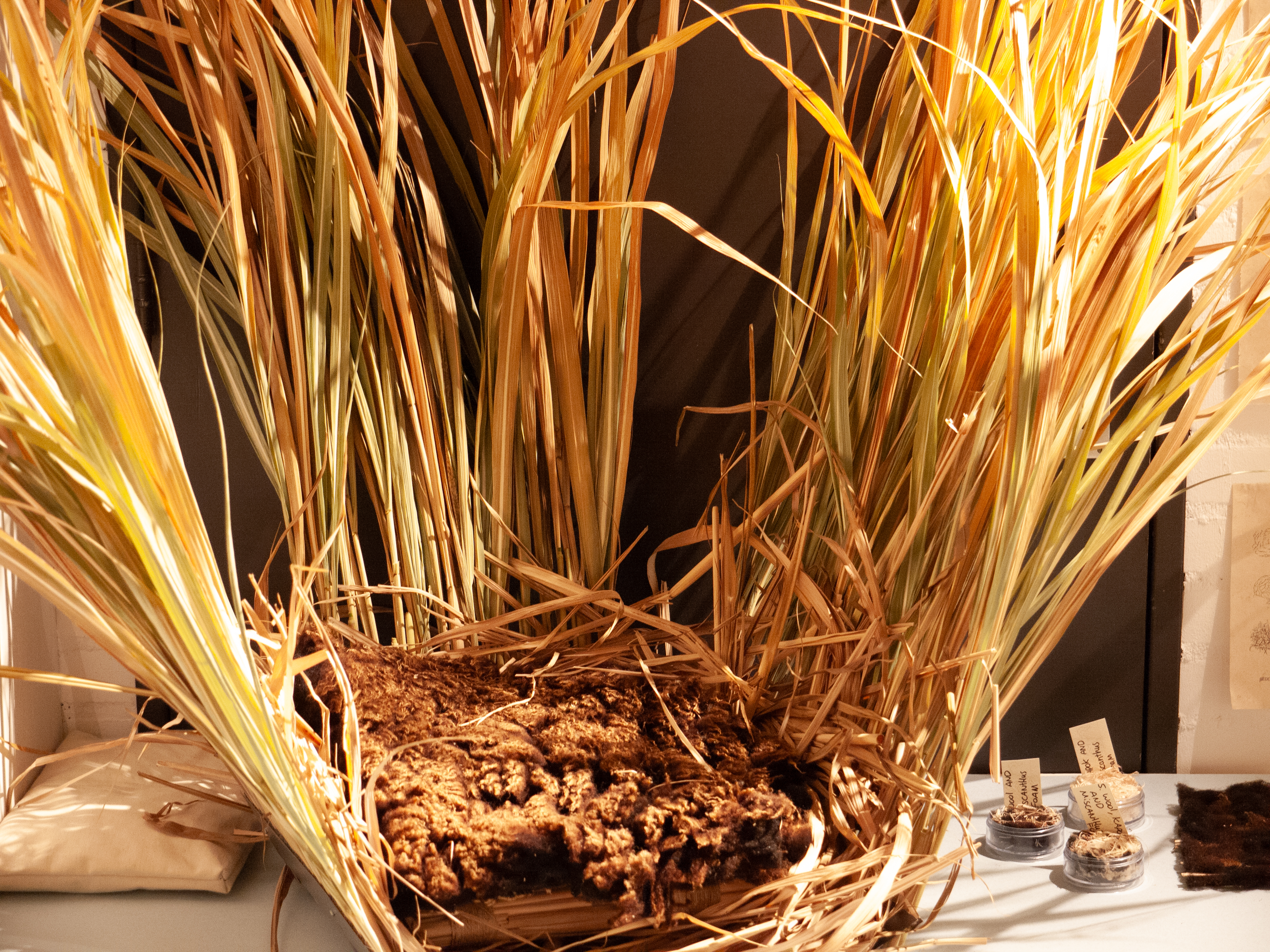How do we observe and interpret the things we see?
Lotte Gerick is a RASL Double Degree student, she studies Graphic Design at WdKA (second year) and International Arts and Culture Studies at the EUR. Lotte has applied for this course because of the appealing combination of academic research and a practical approach at the WdKA.
In her interview on RASL website, Lotte explains that bridging two different worlds is where she sees her future:
"I want to change the way cultural organisations can be managed in chaos without any commercial insight. I think there should be both. It is so interesting because everything is so organised at the university and then you go to the art academy and it is a totally different energy. As a student, I can work freely in my Erasmus assignments and I can be organised at the Art Academy. In Arts and Culture, (EUR) guidelines allow me to be very creative, while I can use my organisation and time management skills at WdKA to work more efficiently. Als my major, Graphic Design, is about organising visual information to send a specific message, to communicate what you want.
...At the Art Academy, you really learn how to work through the struggle, to push a creative process and you learn that it can be hard. The Art Academy is a lot more than learning how to simply design, it is also about learning the framework of what you are designing in and acceptance of the uncertain climate in which you are working."
Recently Lotte, together with two classmates, organised an event at Museum Boijmans Van Beuningen, for art students and medical students:
The Art of Seeing.

How do we observe and interpret the things we see?
How does our education shape us into being specific observers? During this event, the students of WdKA and Erasmus Medical Center (EMC) have shared their artistic or clinical expertise and have learned from each other’s way of observing.
For both physicians and creatives viewing is an essential element of their daily practice. When a doctor sees a patient a lot of his or her diagnosis is based on the observation of subtle signals and body language. In the practice of an artist or designer, viewing is essential in translating the world around them into objects of art or design.
Design by Lotte Gerick, Gabija Bubnyte en Eveline van der Duim
The Art of Seeing. How did you come up with the idea?
I have come across a post online from Studium Generale - an open call that inspired me to develop a concept of an event (and organise it) from the perspective of RASL (Rotterdam Arts and Sciences Lab). I have invited my fellow RASL students, Gabija Bubnyte en Eveline van der Duim to join this project, we have submitted our idea and were invited for the first meeting. Later we have discussed our concept with medical students and after several meetings, the event has begun to take shape. Our starting point was the wish to explore the different ways of observing, as the observational skills are essential to both disciplines, in an extended way. Doctors more in an objective way than the artists.
To put the art of seeing to the test students of EMC and WdKA were invited to meet in Museum Boijmans Van Beuningen. The programme had started with three short lectures from art historian Liesbeth De Strooper, medical practitioner prof. dr. Jan Cornelissen and design studio Koehorst in ‘t Veld. Subsequently, students were divided into small groups, went to the museum and, guided by assignments, discussed specific artworks.
Organising the event for artists and scientists from scratch, tough or easy?
In general it was very nice to do, but of course, with a little bit of edge. Finding a common ground with very strict doctors was sometimes hard - when we thought out loud and were imaginative, they found it difficult to understand what we meant. But it went great nonetheless and we have learnt a great deal from each other.
The most interesting moments/highlights of the event?
That would be the three lectures we have organised, one by an art historian, another by a doctor and the last one by a design studio. They were all reflecting on the sick child image from Edvard Munch painting. It was interesting to see that three very different backgrounds could tell a bit about the same painting, it came really together after the three lectures.

Edvard Munch: The Sick Child
The Sick Child (Norwegian: Det syke barn) is the title given to six paintings and a number of lithographs, drypoints and etchings completed by the Norwegian artist Edvard Munch (1863–1944), between 1885 and 1926. All record a moment before the death of his older sister Johanne Sophie from tuberculosis at 14. Munch returned to this deeply traumatic event again and again in his art, over six completed oil paintings and many studies in various media, over a period of more than 40 years.
Edvard Munch, The Sick Child, 1885–86. The original version. Nasjonalgalleriet, Oslo.
Now we are thinking of organising The Ways of Seeing event, a view from another perspective. This event will be held inside a hospital. We have noticed that the Boijmans van Beuningen was a place where the art students felt at home, but the medical students did not. Recently I went to the hospital and it was a very strange environment for me; so I would like to find out, can this change after the event? Now we are in the process of organising tours in the hospital and thinking about discussions we can have about the art there. We plan to do this in spring.
Collaboration between Art and Science, what are the benefits for both?
Living in two worlds comes with benefits. You see the organisational structure of both institutes - the systematically organised EUR as a contrast to the free energy of the WdKA. Sometimes you have to switch a lot and do it fast. That keeps you sharp and flexible, which is, in my opinion, something a designer of the future has to be and within the disciplines I want to work, it is a valuable asset.
The most valuable lesson?
The fact that we had so many parties at the table, Erasmus Medical Centre, Boijmans van Beuningen, Stadium Generale and Willem de Kooning Academy, all brought together by us, made us feel special and helped realise that if you contact the right (interested) parties, you can organise the most awesome events.
Is there anything that you didn’t expect to learn but came as a bonus?
Especially the fact that even though all the students came from such different backgrounds, they still were also looking for common ground and not just looking for the differences, was nice to see. It made me realise that after all, we are just the same and that even though it is not looking like it, we can learn from each other.
What kind of (transdisciplinary) expert would you like to become in three years?
I would love to combine strategy and management with consultancy and design. So more in corporate life, where design plays a major role but is not all you are focussing on. You can see this for example within Service Design, where the consumer plays a central role in the design process, but at the same time design is also combined with consultancy. I hope to achieve this by gaining experience in both a smaller corporation, for example within a startup and also at a bigger established one, as with my double degree, a creative internship and a business one.
Name a true pioneer artist, who, in your opinion, unites Art and Science in her/his practice in the most inspiring way?
I really like Melle Smets' work, which asks questions about being human and what impact technology has on our lives. He does research about what the impact of our environment has on our lives.
More insights about The Art of Seeing here.



